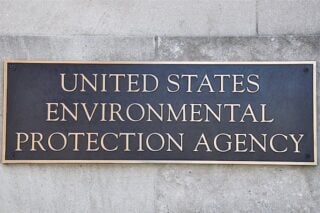The U.S. Environmental Protection Agency (EPA) has proposed that Columbia Falls Aluminum Co. (CFAC) be listed as a Superfund site and is currently proceeding with an investigation into the soil and water contamination.
The preliminary study showed unsafe levels of a variety of heavy metals and other dangerous substances, including asbestos, in the groundwater, soils, and sediments. The plant’s current investigation is expected to finish by 2021.
“Nobody knew that asbestos was there,” said Cliff Boyd of Oregon-based Calbag Resources (owner of CFAC’s above-ground assets) upon demolition and recycling of the buildings. “We went and drilled through the roofs—there may be six or seven layers on it. The original layer, from the ‘50s, tested for asbestos. Nobody would have known that was there unless you drilled a hole.”
Calbag is in charge of demolition, material recovery, and removal of hazardous substances, such as asbestos, in and around the property’s structures. The work should end in 2017, but the discovery of asbestos in many of the buildings added over a year to the demolition time when it was only expected to last up to two.
The CFAC still has ownership of some aluminum scrap, which is being reused at a still-operational aluminum smelter in Kentucky.
In its current state, about half of the buildings have been demolished. Several warehouses and the plant’s front office will be kept untouched. The machine shop’s construction is still yet to be determined.
For next steps, Calbag is waiting on final approval from Montana’s Department of Environmental Quality (DEQ) to remove any hazardous waste as well as specialized equipment for demolition of the paste plant. Once approval is received, Calbag can remove the waste and transport it to a specially permitted landfill in Oregon.
“If the plan gets completed in a timely fashion, we’re ready to start removing all the hazardous materials in pot rooms one through four right now,” said Boyd regarding the 40-acre building with ten pot rooms. “We then dig all the SPL [spent potliner] out of the pots, put it in the truck the very next day to transport offsite.”
All dangerous substances would need to be removed within 235 days according to the plan, if it goes through.
The removal of underground hazardous material is still question. “We’ve obviously suggested to the owners that we still have some skill sets and we’d like to bid on some work, but we don’t have any current contracts,” Boyd commented.





